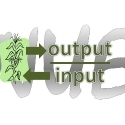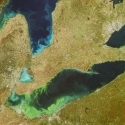06 Mar 2014
Crop Nutrient Balance - Quebec - Nitrogen
Since nitrogen (N) is a mobile nutrient, producers focus on matching crop uptake requirements as closely as possible. Applying N in surplus to crop needs does not build up a reserve in the soil. However, when amounts applied are deficient, crop growth suffers, decreasing the return of crop residues to the soil and thus depleting soil reserves of organic N. In the past, crops were removing more N than was being supplied by manures, fertilizers and legume fixation. Soil organic matter was declining. Since 1982, removal more closely matches the supply in fertilizers, legume fixation, and recoverable manure (Figure 1). Soil organic matter levels in many crop rotations have stabilized. Growers are relying less on the breakdown of soil organic matter to supply N. The idea of storing carbon in soil is not compatible with the notion of relying on the soil to provide N for the crop. If soil organic matter is to be increased, crops need sufficient N for optimum growth, and the N balance will need to have a small surplus in relation to removal. Recent research in Kentucky provides a good example of the role of N in maintaining soil organic matter. A large fraction of the N excreted as manure is considered non-recoverable, owing to high rates of loss in the barn, in storage and during handling. The non-recoverable fraction in general is not applied to cropland, though some of it may reach cropland by deposition from the atmosphere. Recoverable manure N is the best estimate of the total amount of manure N actually applied to cropland. A large fraction of the N excreted as manure is considered non-recoverable, owing to high rates of loss in the barn, in storage and during handling. The non-recoverable fraction in general in general is not applied to cropland, though some of it may reach cropland by deposition from the atmosphere. The transition from a forage-and-livestock dominated agriculture to annual cash crops came later in Quebec than in Ontario, but today there is significant production of corn and soybeans. Over time, hay production has declined, and soybeans have increased. (Figure 2). Large amounts of N are removed by hay, soybeans and grain corn. The livestock industry has declined less in Quebec than in other parts of Eastern Canada. The swine industry is substantial. Since hog and poultry manure is more recoverable, the two sources account for an even greater fraction of recoverable manure (Figure 3).
Figure 1. Nitrogen inputs to cropland include legume N fixation, recoverable manure and fertilizer, shown as stacked areas summing to the total input. Removal by harvested crops is shown by the vertical bars. The units are pounds of N per acre of total cropland. Non-recoverable manure N is mainly left on pasture or lost to the air, and is not part of the cropland nutrient balance.
Figure 2. Nitrogen removed by harvest of major crops. Stacked areas sum to removal by these listed crops.
Figure 3. Nitrogen in manure, as-excreted and recoverable, from cattle, hogs and poultry.



